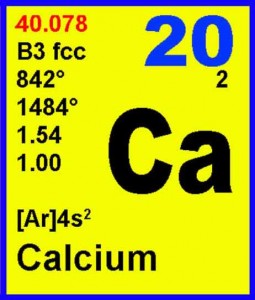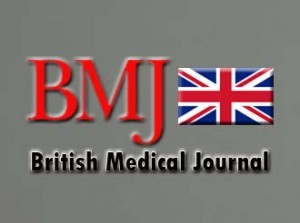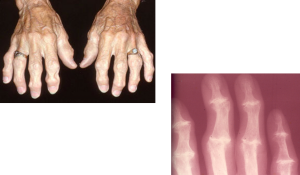Navigating through lies, politics and profit in
an attempt to find better health.
"Don't count on milk to beat osteoporosis.
In a Harvard study of 78,000 nurses, drinking three or more glasses of milk per day did not reduce fractures at all. An Australian study showed the same thing.
Nearly 78,000 nurses participated in the 12-year milk and bone fracture study. MILK, DIETARY CALCIUM AND BONE FRACTURES The study found "no significant association" between teenage milk consumption and the risk of adult fractures. Data from the study indicate that frequent milk consumption and higher dietary calcium intakes in middle aged women do not provide protection against hip or forearm fractures. A SHOCKING AND UNEXPECTED REVELATION
 In the Harvard study, women consuming greater amounts of calcium from dairy foods had significantly INCREASED risks of hip fractures, while no increase in fracture risk was observed for the same levels of calcium from non-dairy sources.
In the Harvard study, women consuming greater amounts of calcium from dairy foods had significantly INCREASED risks of hip fractures, while no increase in fracture risk was observed for the same levels of calcium from non-dairy sources.
“Consumption of dairy products, particularly at age 20 years, was associated with an increased risk of hip fracture in old age. (“Case-Control Study of Risk Factors for Hip Fractures in the Elderly”. American Journal of Epidemiology. Vol. 139, No. 5, 1994).
And the 12 year long Harvard Nurses’ Health Study found that those who consumed the most calcium from dairy foods broke more bones than those who rarely drank milk. This is a broad study based on 77,761 women aged 34 through 59 years of age.
“These data do not support the hypothesis that higher consumption of milk or other food sources of calcium by adult women protects against hip or forearm fractures.” (Source: Feskanich D, Willett WC, Stampfer MJ, Colditz GA. Milk, dietary calcium, and bone fractures in women: a 12-year prospective study. American Journal of Public Health. 1997).
 Amy Lanou Ph.D., nutrition director for the Physicians Committee for Responsible Medicine in Washington, D.C., who states that: “The countries with the highest rates of osteoporosis are the ones where people drink the most milk and have the most calcium in their diets. The connection between calcium consumption and bone health is actually very weak, and the connection between dairy consumption and bone health is almost nonexistent.”
Amy Lanou Ph.D., nutrition director for the Physicians Committee for Responsible Medicine in Washington, D.C., who states that: “The countries with the highest rates of osteoporosis are the ones where people drink the most milk and have the most calcium in their diets. The connection between calcium consumption and bone health is actually very weak, and the connection between dairy consumption and bone health is almost nonexistent.”
The best milk substitutes
A favorite milk substitute is unsweetened almond milk, not only because it is alkalizing (as almonds are), but also because it’s delicious and tastes very similar to milk. You can even cook with it!
If almond milk is hard to get, you can also try rice or soy milk
THERE is not a shred of evidence that upping calcium intake above a relatively low threshold, improves bone health or reduces the risk of bone fractures.
 A study just published in the prestigious British Medical Journal hammers another nail into the coffin of the eat-more-calcium-for-stronger-bones myth, with the finding that women with the highest intake of calcium had a 19% higher risk of experiencing a hip fracture than those whose calcium intake was modest but adequate.
A study just published in the prestigious British Medical Journal hammers another nail into the coffin of the eat-more-calcium-for-stronger-bones myth, with the finding that women with the highest intake of calcium had a 19% higher risk of experiencing a hip fracture than those whose calcium intake was modest but adequate.
This study's strengths included: the large number of study subjects (over 60 000 Swedish women); the duration of follow-up (19 years); the fact that it was prospective (i.e. the participants were recruited before any of them had suffered a fracture) and calcium intake was repeatedly measured over the follow-up period, eliminating the problem of 'recall bias' -the tendency of people who have already suffered a disease, to overestimate their past exposure to risk factors for it - that plagues retrospective studies; and the statistical adjustment for various other factors that affect bone health and fracture risk, such as smoking, physical activity level, and whether the women had had children (which decreases fracture risk).
 The researchers analyzed the participants' diet records, and divided them into 5 groups, from lowest to highest calcium intake. They found that women with the lowest calcium intake from foods and supplements (less than 750 mg per day) had an 18% higher risk of suffering any type of fracture, and a 29% greater risk of hip fracture, than women who consumed 882-996 mg of calcium per day (an amount easily achieved on an entirely plant-based diet, high in green leafy vegetables, legumes, nuts and seeds).
The researchers analyzed the participants' diet records, and divided them into 5 groups, from lowest to highest calcium intake. They found that women with the lowest calcium intake from foods and supplements (less than 750 mg per day) had an 18% higher risk of suffering any type of fracture, and a 29% greater risk of hip fracture, than women who consumed 882-996 mg of calcium per day (an amount easily achieved on an entirely plant-based diet, high in green leafy vegetables, legumes, nuts and seeds).
However, women with the highest calcium intake (more than 1137 mg per day) had a 19% higher risk of suffering a hip fracture than those in the 882-996 mg/day group. Given that the Australian government now recommends a daily intake of 1300 mg of calcium for individuals over 50, and many older women are taking more than 1000 mg per day of calcium from supplements, above and beyond what they obtain through their diet, the findings from this carefully-conducted study must give serious pause for thought.
According to Carolyn Dean, a medical and naturopathic doctor:
"I've heard statistics like a 700 percent rise in osteoporosis in a 10-year period, even while taking all this calcium. The myth that's been created about calcium is that we need twice as much calcium as we do magnesium. Most of the supplements reflect this. We've got a situation where people are taking 1,200 to 1,500 milligrams of calcium and maybe a few hundred milligrams of magnesium.
The 2:1 ratio—that was a mistake; a mistaken translation from French researcher Jean Durlach, who said never ever go beyond two parts calcium to one part magnesium in your food, water, or supplement intake combined."
Twelve green leafy vegetables were analyzed for their mineral contents. The following concentration ranges (in mg g−1 dry weight) were obtained for the elements determined: sodium, 0·11–0·76; potassium, 0·36–1·07; calcium, 0·24–0·73; phosphorus, 0·18–0·39; magnesium, 0·66–1·76; manganese, 0·03–0·12; iron, 0·35–0·56; zinc, 0·04–0·12. NOTE: 2-3x THE MAGNESIUM TO CALCIUM






